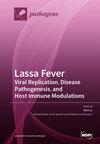Adult Respiratory Syncytial Virus Infection: Defining Incidence, Risk Factors for Hospitalization, and Poor Outcomes, a Regional Cohort Study, 2016–2022
IF 3.3
3区 医学
Q2 MICROBIOLOGY
引用次数: 0
Abstract
Background: Respiratory syncytial virus (RSV) is a significant cause of illness in adults, especially older adults and those with underlying conditions. This study aimed to assess the incidence of RSV hospitalizations in adults and identify risk factors for hospitalization and poor outcomes. Methods: A retrospective cohort study was conducted using data from two hospitals in southern Israel from 2016–2022. We calculated incidence rates of RSV and influenza hospitalizations. Risk factors for hospitalization were analyzed using Poisson regression. We evaluated poor outcomes (death, ICU admission, or mechanical ventilation) among RSV-hospitalized patients. Results: The median annual incidence of RSV hospitalization was 28.2/100,000 population, increasing with age to 199/100,000 in those ≥75 years. Significant risk factors for RSV hospitalization included pulmonary diseases (RR 4.2, 95% CI 3.4–5.2), cardiovascular diseases (RR 3.3, 95% CI 2.6–4.2), and chronic renal failure (RR 2.9, 95% CI 2.3–3.7). Among hospitalized RSV patients, 13.9% had poor outcomes. Renal failure (RR 1.81, 95% CI 1.23–2.66), neutropenia (RR 2.53, 95% CI 1.19–5.35), neutrophilia (RR 1.66, 95% CI 1.81–2.34), and lymphopenia (RR 2.03, 95% CI 1.37–3.0) were associated with poor outcomes. Conclusions: RSV causes a substantial burden of hospitalizations in adults, particularly among older adults and those with comorbidities. Identifying high-risk groups can help target prevention and treatment strategies, including vaccination.成人呼吸道合胞病毒感染:2016-2022 年地区队列研究:确定发病率、住院风险因素和不良结局
背景:呼吸道合胞病毒(RSV)是导致成人,尤其是老年人和患有基础疾病的成人患病的重要原因。本研究旨在评估成人 RSV 住院率,并确定住院和不良后果的风险因素。研究方法我们利用以色列南部两家医院 2016-2022 年的数据进行了一项回顾性队列研究。我们计算了 RSV 和流感住院的发病率。使用泊松回归分析了住院的风险因素。我们对 RSV 住院患者的不良结局(死亡、入住重症监护室或机械通气)进行了评估。结果:RSV 住院治疗的年发病率中位数为 28.2/100,000,随着年龄的增长,≥75 岁患者的发病率增至 199/100,000。RSV住院的重要风险因素包括肺部疾病(RR 4.2,95% CI 3.4-5.2)、心血管疾病(RR 3.3,95% CI 2.6-4.2)和慢性肾功能衰竭(RR 2.9,95% CI 2.3-3.7)。在住院的 RSV 患者中,13.9% 的患者预后不佳。肾衰竭(RR 1.81,95% CI 1.23-2.66)、中性粒细胞减少(RR 2.53,95% CI 1.19-5.35)、中性粒细胞增多(RR 1.66,95% CI 1.81-2.34)和淋巴细胞减少(RR 2.03,95% CI 1.37-3.0)与不良预后相关。结论:RSVRSV 给成人住院治疗带来了巨大负担,尤其是老年人和合并症患者。识别高危人群有助于制定有针对性的预防和治疗策略,包括接种疫苗。
本文章由计算机程序翻译,如有差异,请以英文原文为准。
求助全文
约1分钟内获得全文
求助全文
来源期刊

Pathogens
Medicine-Immunology and Allergy
CiteScore
6.40
自引率
8.10%
发文量
1285
审稿时长
17.75 days
期刊介绍:
Pathogens (ISSN 2076-0817) publishes reviews, regular research papers and short notes on all aspects of pathogens and pathogen-host interactions. There is no restriction on the length of the papers. Our aim is to encourage scientists to publish their experimental and theoretical research in as much detail as possible. Full experimental and/or methodical details must be provided for research articles.
 求助内容:
求助内容: 应助结果提醒方式:
应助结果提醒方式:


